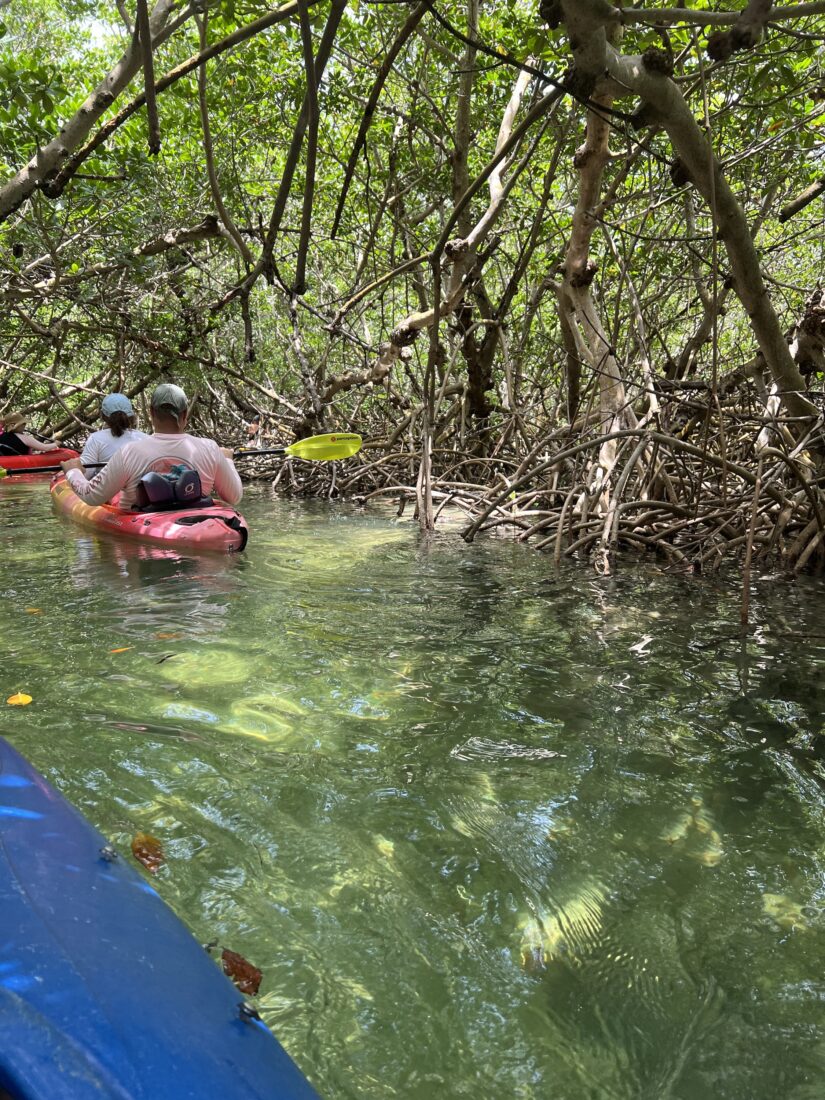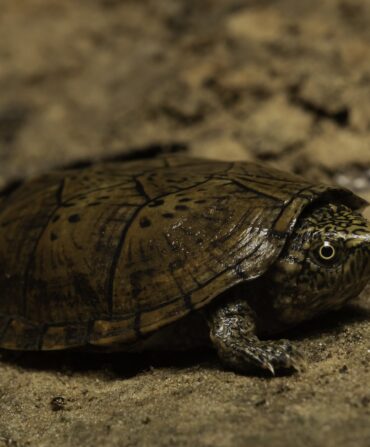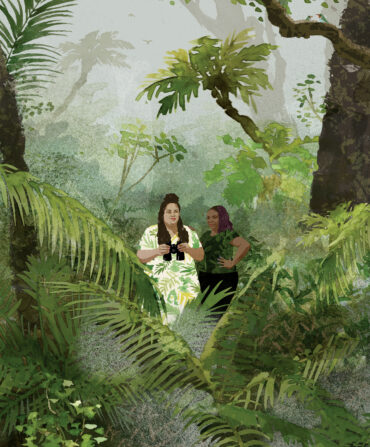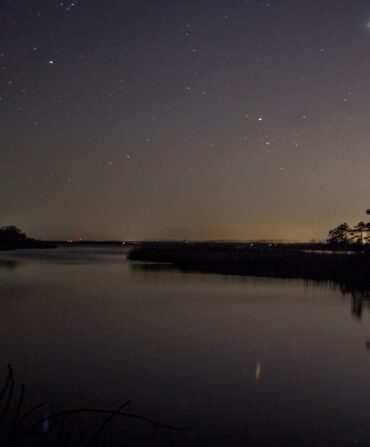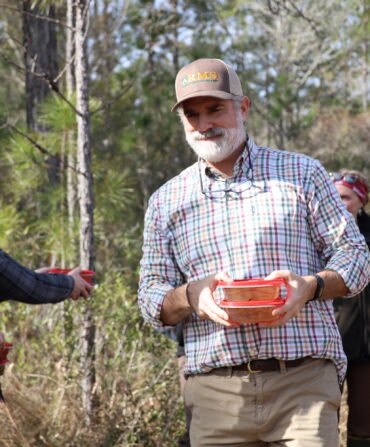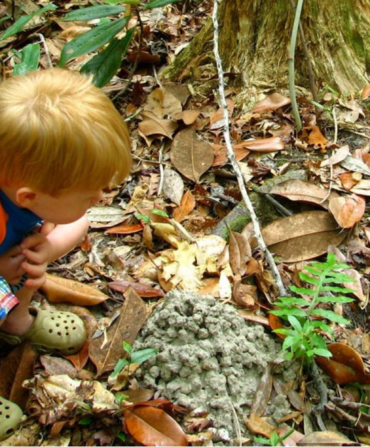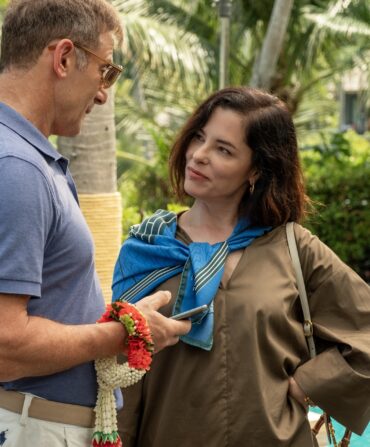Tucked deep in the mangrove mazes off Key West, away from the island’s usual rooster crows and rum-fueled revelry, lies an otherworldly Florida paradise. It’s a hushed oasis of tree root tunnels, glassy lagoons, and backwater channels—a spot that locals call a “hurricane hole.”

In general nautical terms, a hurricane hole is a well-protected bay or harbor where boaters steer when the radar turns red and the wind starts to howl. Nestled among barrier islands or wrapped in mangroves, these pockets offer refuge from punishing storms. Think Simpson Bay in St. Maarten or the quiet cradle of Gustavia Harbor in St. Barths. Safe harbors in the truest sense.
But down in Key West, “hurricane hole” has taken on a wider meaning. Some paddlers use the term to describe a pocket that’s seemingly wilder and more alive than the rest of the coast: a tangle of roots that’s become its own ecosystem. And on a recent kayak tour through a mangrove forest with Lazy Dog Adventures, I could see how the name fit in another way—as a place to slip into and disappear.
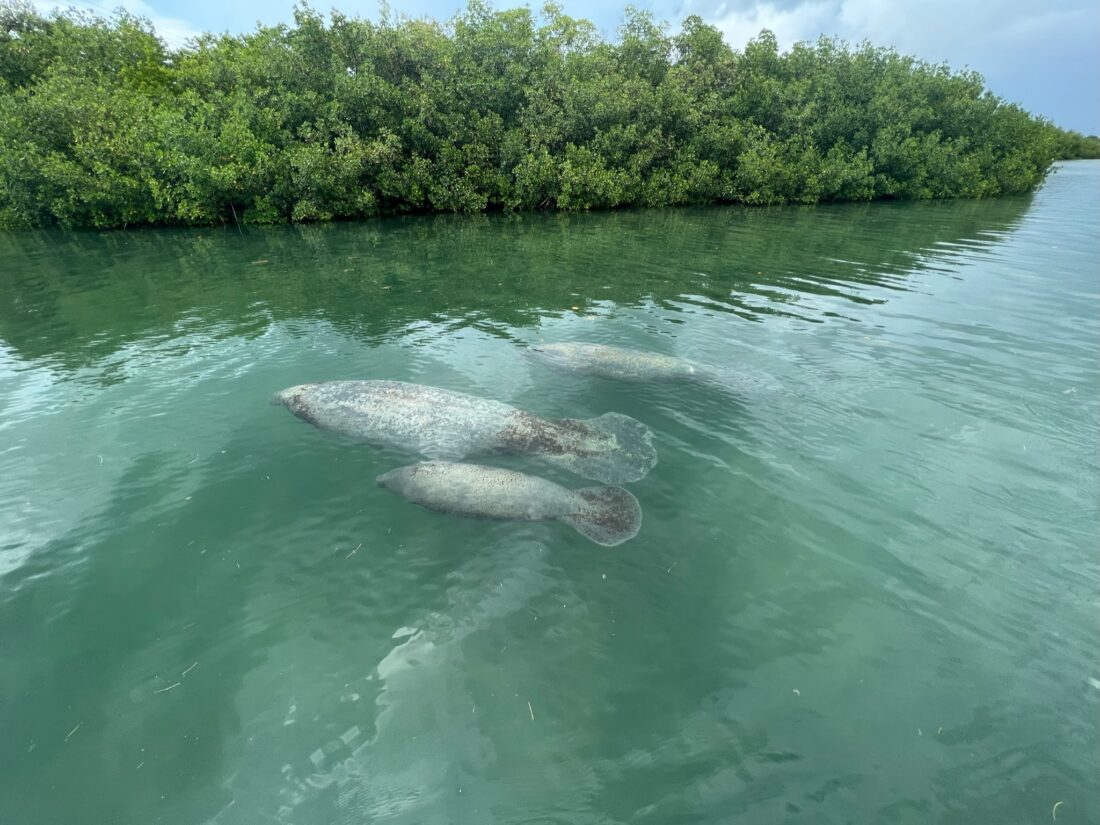
That morning carried a post-storm quiet, and the air was thick with salty humidity. I crouched low in the kayak, ducking beneath a tangle of branches, using my paddle to push through. We emerged into a mangrove-buffered lagoon so calm it felt as though we’d slipped outside of time.
Cassiopea jellyfish—those ethereal “upside-down” creatures that pulse gently beneath the surface—drifted near our paddles. Tree roots twisted into underwater cities where spiny lobsters, sea stars, and juvenile parrotfish weaved between shadows. The prop roots of red mangroves trap silt and mud, building land where sea once existed. “The tide rolls in, pushes everything into the roots,” explained Kathy Gilmour, Lazy Dog general manager and longtime eco-tour guide. “Then it recedes and leaves behind a little more ground. That’s how mangrove islands form.”
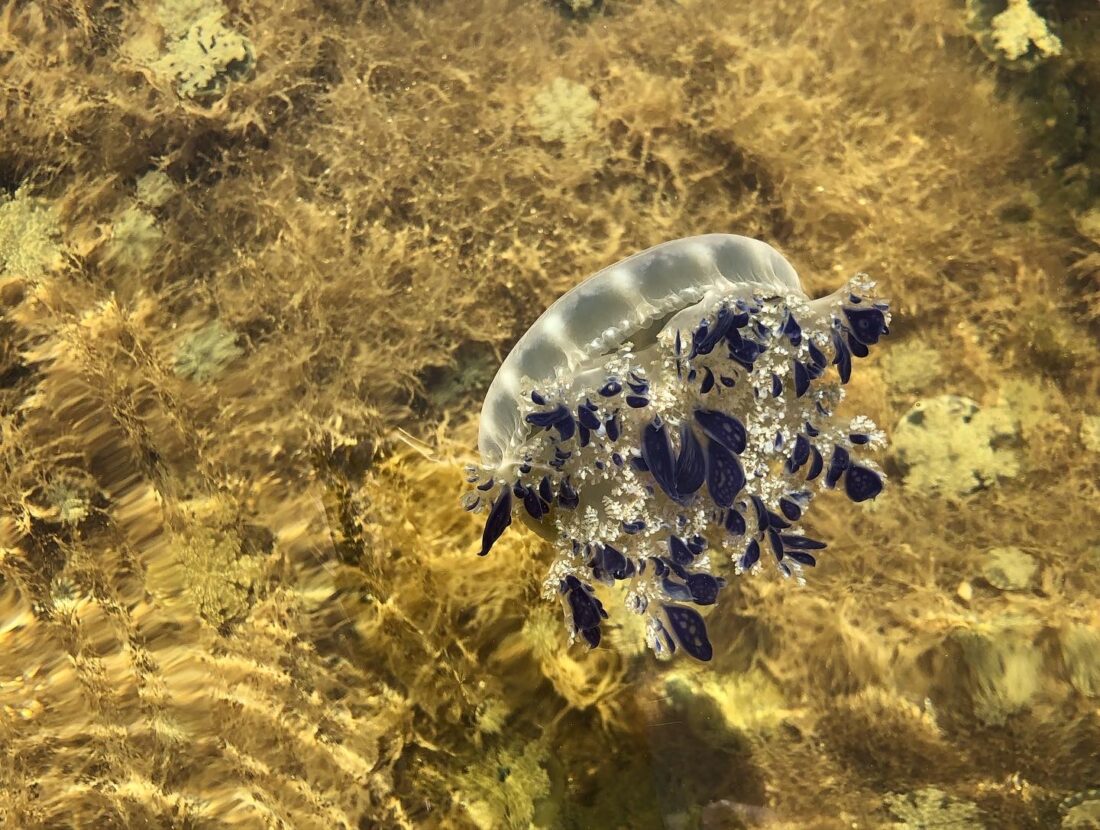
Those roots, which can endure winds of up to 250 miles per hour, lace through the shallows like the stitching of a well-worn net, holding the island’s edges in place. Fire sponges cling to submerged limbs, beautiful but stinging to the touch. Tree crabs scuttle up slick trunks. Barracuda float in the shadows, driftwood-still. Above the surface, the trees have developed another trick: To handle the salt they absorb, mangroves grow a single yellow “sacrificial” leaf—one that takes the brunt of the salt. When it’s full, the tree lets it go.
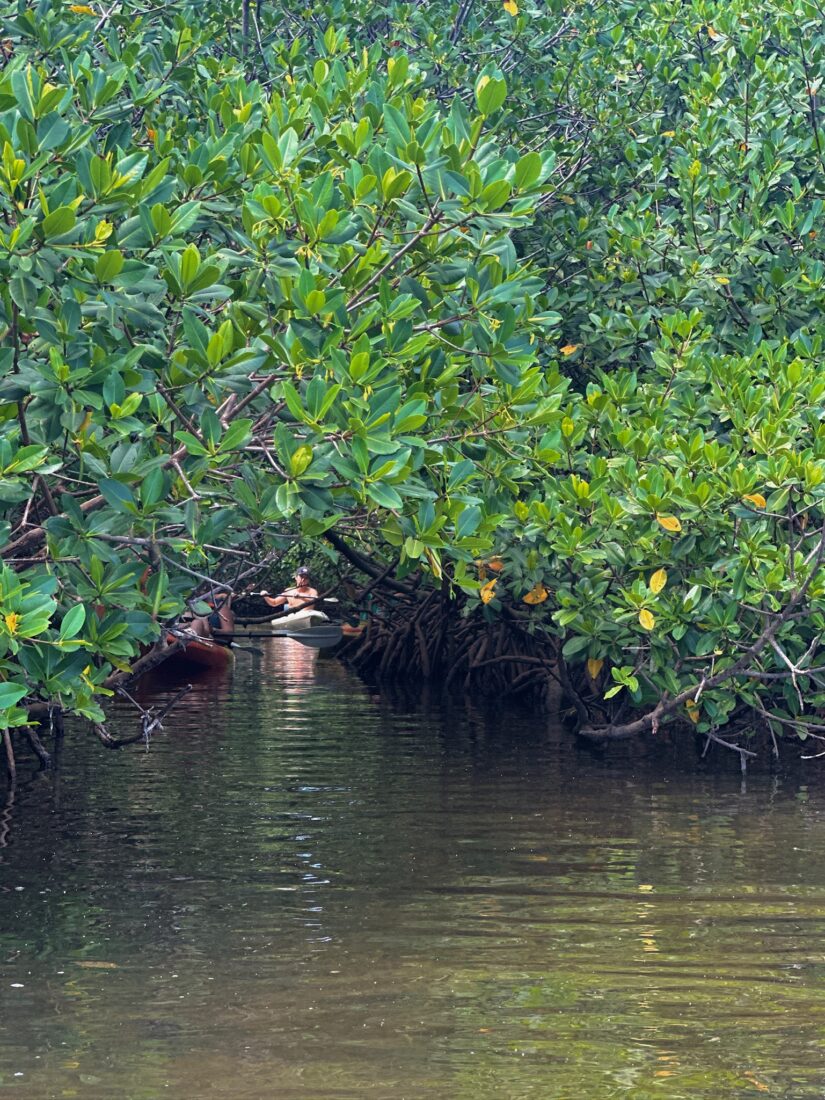
“You get this whole ecosystem in the mangroves,” Gilmour says. “Rays, octopus, juvenile reef fish. You can get up-close looks at all this beautiful wildlife found in the backcountry that you might not see if you only went to the reefs.”
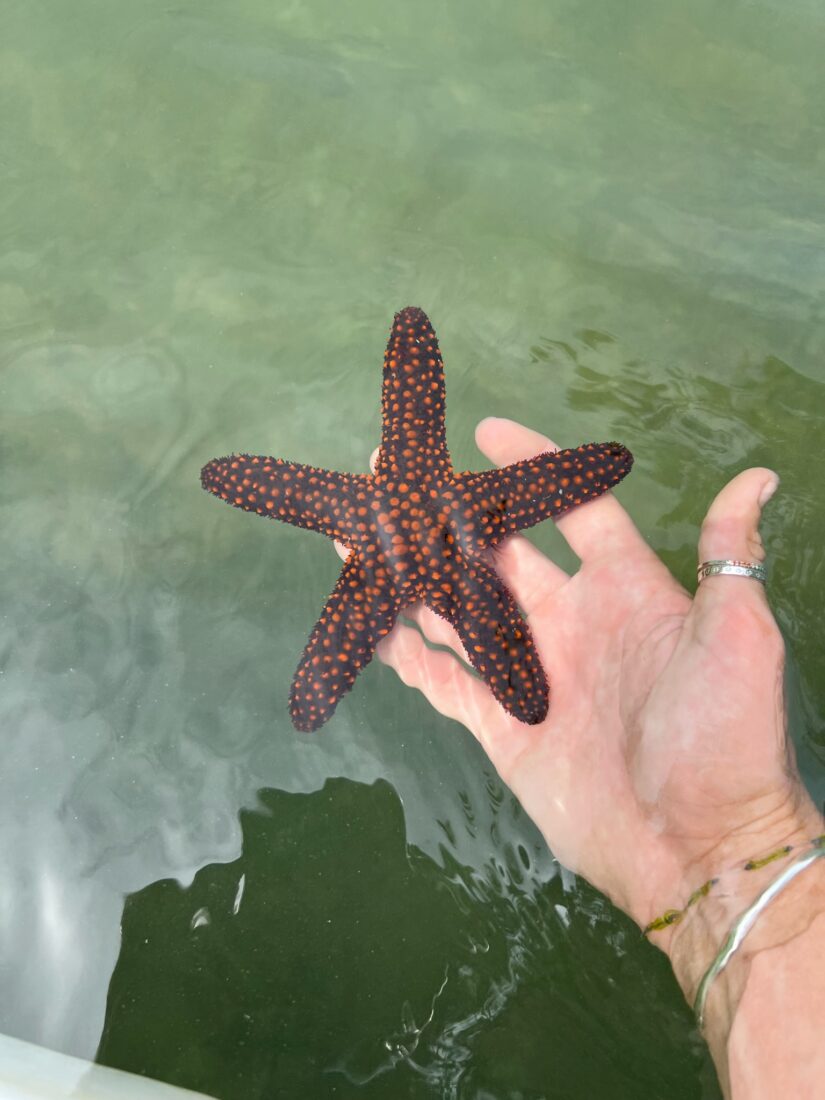
Gilmour says May and June are the prime months for paddling the hurricane holes of Key West, but the experience is rewarding year-round—the calm, sheltered waters suit even first-time kayakers and paddleboarders. These waters stay shallow and crystal-clear, no glass-bottom boat required. Lazy Dog runs daily trips, launching from an aptly named Hurricane Hole Marina on Stock Island.
“All the ocean world knows storms,” Gilmour says. “That’s just life for them. The mangroves provide a lot of shelter from big winds and storms.” And out here, you see how everything’s learned not just to weather them, but to thrive.


